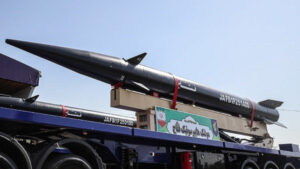Prelims Bits

Context:
Iran deployed the Fattah missile in a recent attack on Israel, marking a significant step in its missile development program.
About the Fattah Missile:
- Name Meaning: “Fattah” translates to “Conqueror” in Persian.
- Type: Iran’s first indigenously developed hypersonic ballistic missile.
- Propulsion System: Employs a two-stage mechanism that boosts both range and terminal speed.
- Range: 1,400 km, classifying it as a medium-range missile.
- Speed: Capable of reaching Mach 13–15 (13 to 15 times the speed of sound).
- Fuel Type: Uses solid-fuel, enabling faster launch readiness and easier storage compared to liquid-fueled systems.
- Warhead Capability: Designed to carry multiple warhead types, potentially including nuclear payloads.
- Manoeuvrability: Its re-entry vehicle (final stage) is capable of mid-air flight path changes, enhancing its ability to bypass missile defence systems.
Key Technical Terms Explained:
- Range Categories:
- Short-Range: Less than 1,000 km
- Medium-Range: 1,000–3,000 km
- Intermediate-Range: 3,000–5,500 km
- Long-Range: Above 5,500 km
- Mach Number: A unit representing the speed of sound.
- Mach 1 = 1,235 km/h at sea level.
- Solid-Fuel Propellant:
- A pre-mixed, stable fuel that offers rapid launch capability and long shelf life.
- Two-Stage Propulsion:
- The first stage launches the missile; the second stage boosts its velocity and range.
- Manoeuvrability:
- The missile can adjust its path during re-entry, making it harder to intercept.
- Terminal Speed:
- Refers to the maximum speed the missile achieves in its final descent towards the target.




